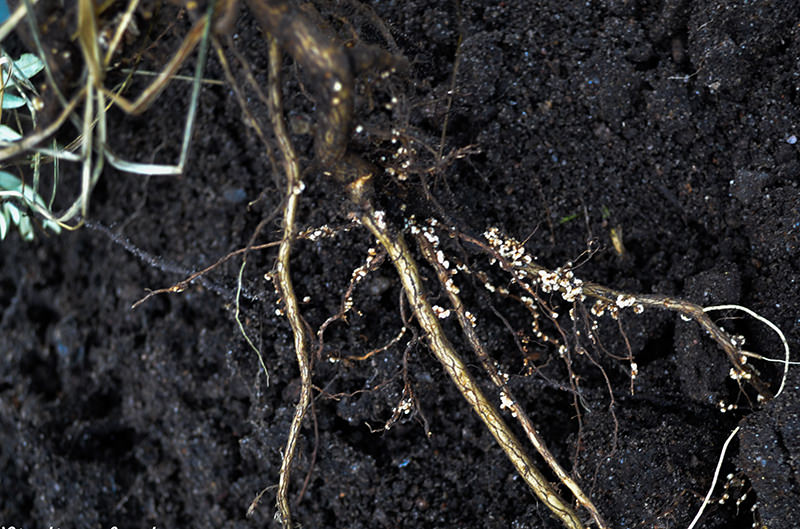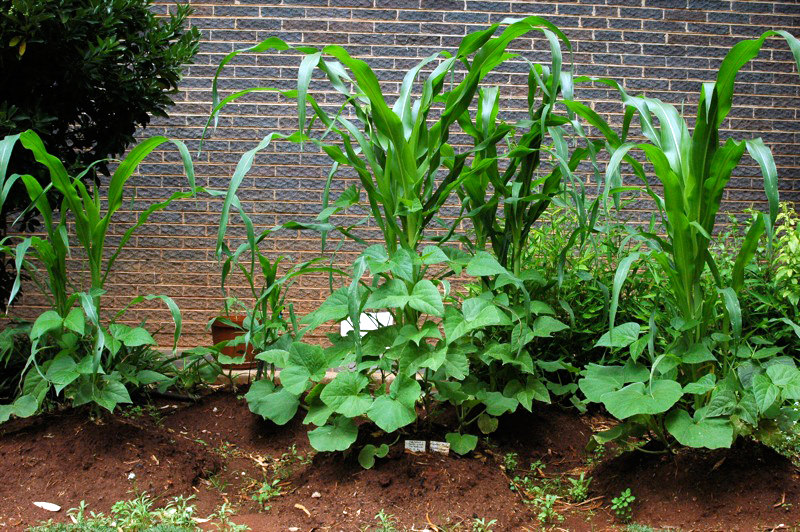

Lynsey Grosfield
Most people—even non-gardeners—have a vague idea about the process of nitrogen-fixation. This knowledge usually stems from hearing about planting clover to rejuvenate the soil in between rotations of crops. Clover is a classic “green manure” that acts against soil depletion, but it is merely one of many plants that can remediate worn-out earth.
Most—but not all—of these nitrogen-restorative plants are legumes, meaning they’re in the Fabaceae (pea) family. The nitrogen fixation they exhibit is a process whereby bacteria (called rhizobia) exist in a symbiotic relationship with the plant. The bacteria live in nodules on the plant’s roots and convert atmospheric nitrogen into a form that is bioavailable.
Although these symbioses primarily exist on the roots of members of the aforementioned Fabaceae family, there are plants like alders (Alnus spp.), sea buckthorns (Hippophae spp.) and gunneras (Gunnera spp.) that also have symbioses with bacteria or cyanobacteria.

Abri le Roux/Flickr
In the garden, you can use these nodule-dwelling rhizobia to your advantage in a single season: Planting peas, beans or alfalfa (all legumes) alongside or between your other crops helps to share the wealth these plants bring to the soil. A classic planting formation that operates on these principles is the Haudenosaunee Three Sisters plot, where maize (corn), beans and squash are grown together.
In between seasons, consider cover-cropping your plots, pots and raised beds with a leguminous seed mix. Or even let a bed lay fallow and unproductive for a season under a cover crop: Your soil will thank you next year. When it comes time to plant again, you can compost the biomass from the cover crop directly into the soil, making a moisture retentive mulch and adding further nutrients.
In the longer term, nitrogen-fixing crops can be used as “nurse crops.” In perennial plant guilds, for example, interplanting with nitrogen-fixing plants makes a system self-sufficient.

Gerry/Flickr
In backyard orchards, leguminous trees, like mesquite or honey locust, can be planted close to fruiting trees, where they protect them from the elements, help them grow straight, attract beneficial insects and boost the soil nitrogen content. They can “nurse” a fruit tree into maturity and then be cut down for timber when the fruit tree is mature. This happens in the wild, as well: The saguaro cactus pictured above benefits from the tight proximity of the mesquite nurse tree.
There are numerous ways to use nitrogen-fixation for a better harvest, and it all starts with learning your legumes!
About the Author: Lynsey Grosfield is the founder of BiodiverSeed, a global seed swap network devoted to the exchange of self-harvested, organic and heirloom seeds with the goal of preserving maximum genetic diversity. Follow BiodiverSeed on Twitter.




